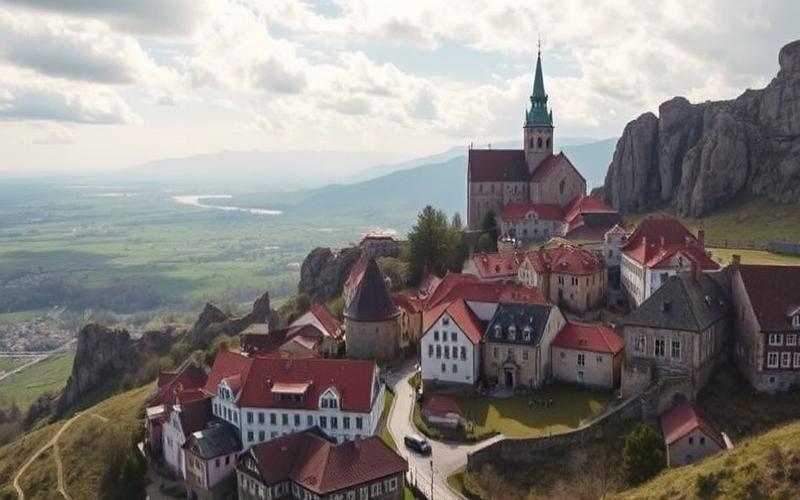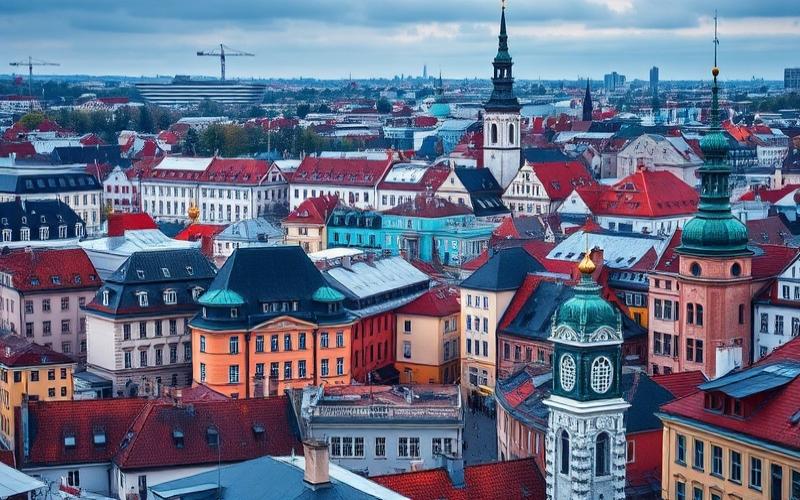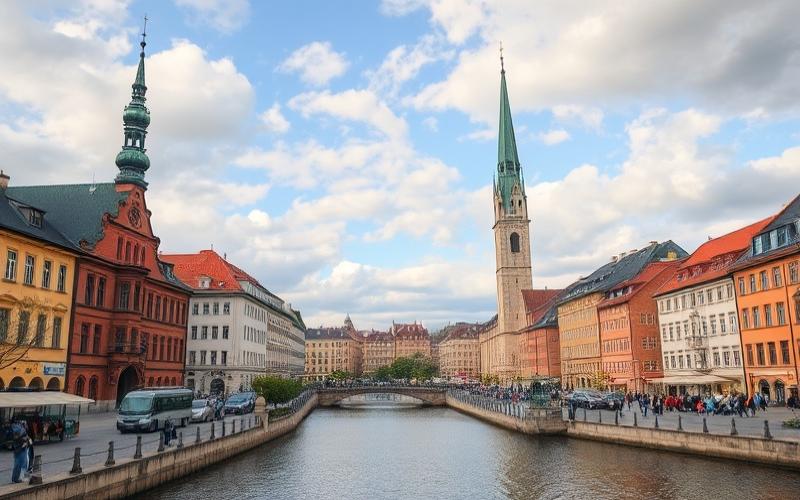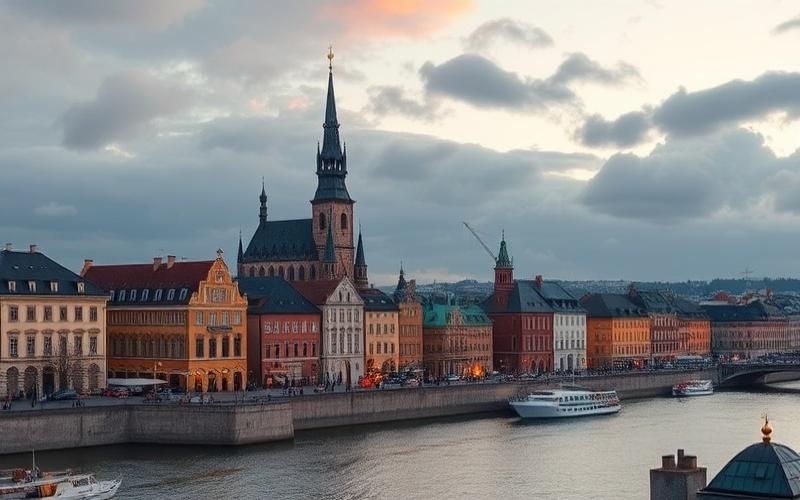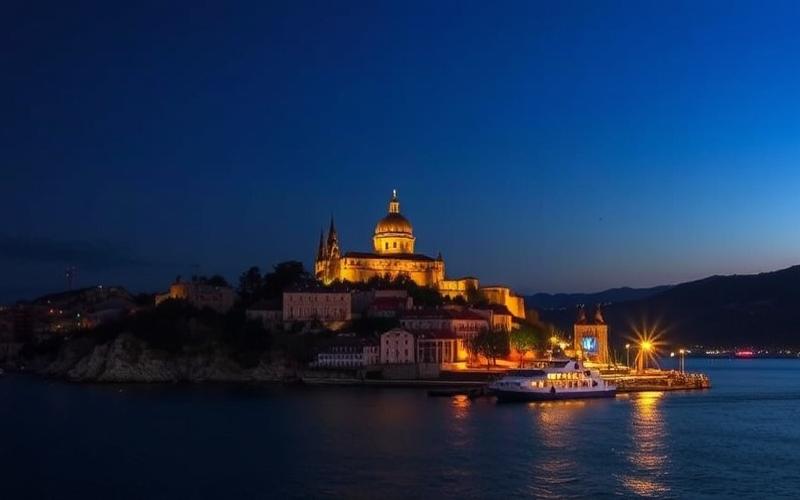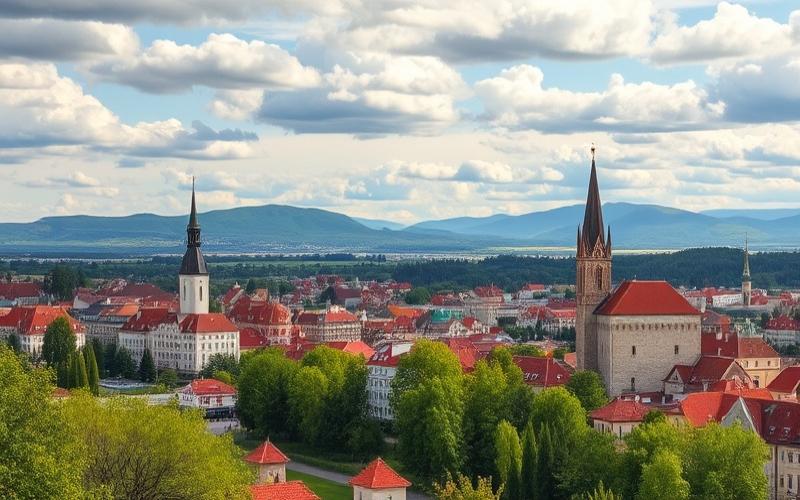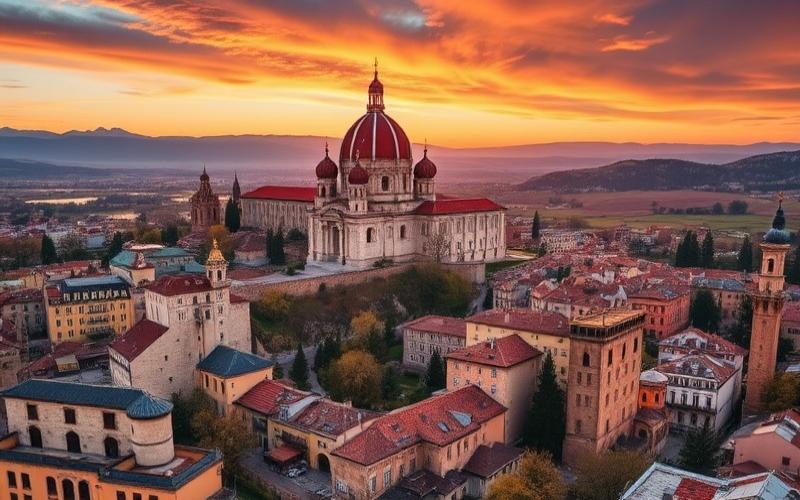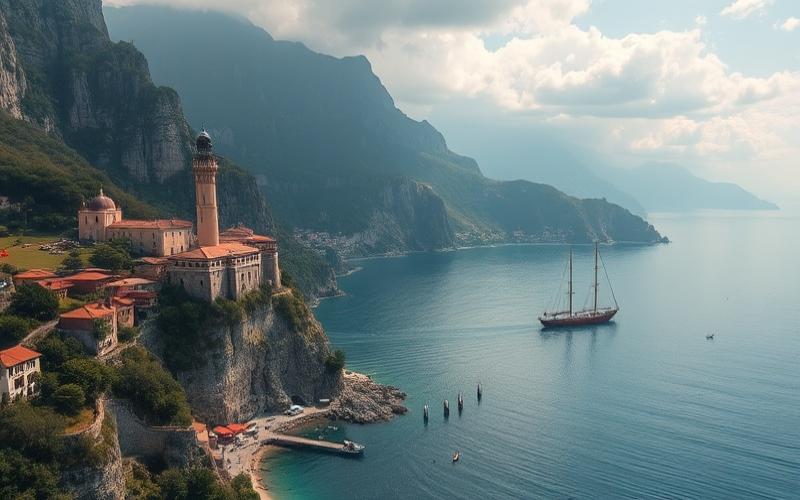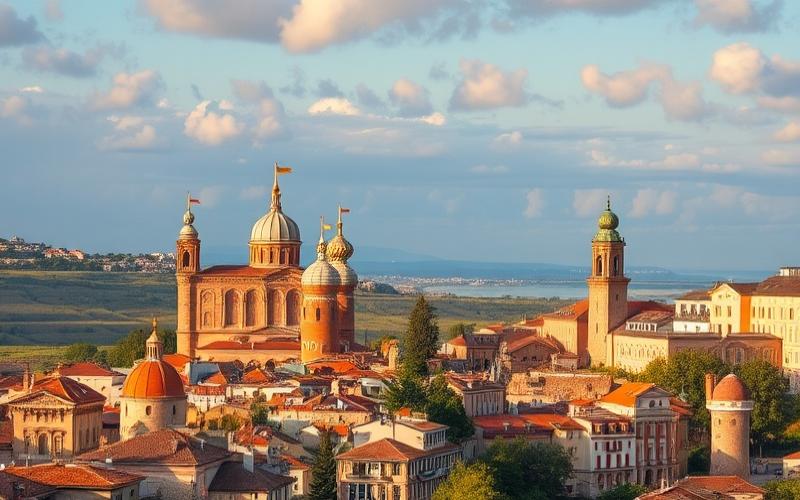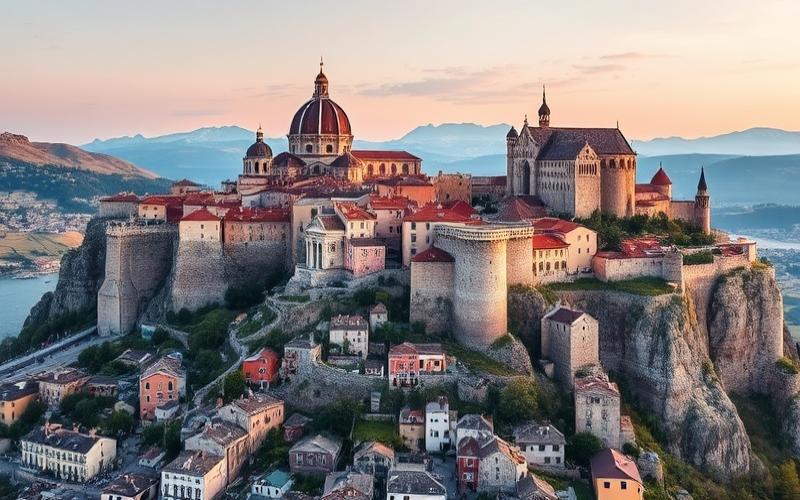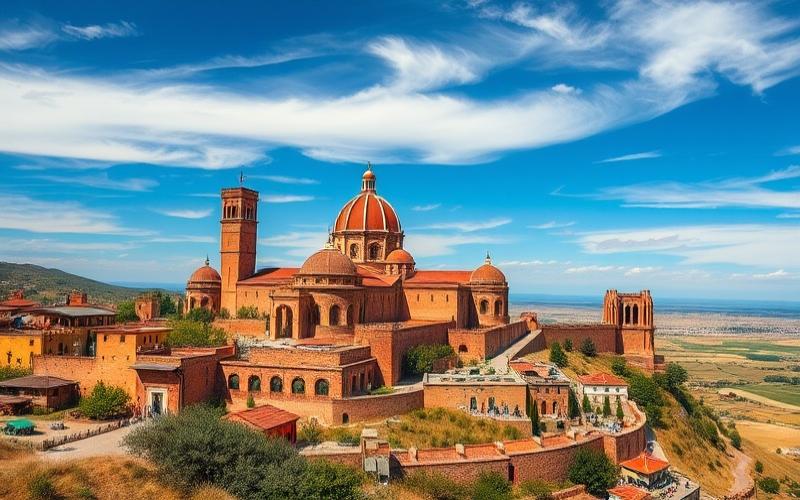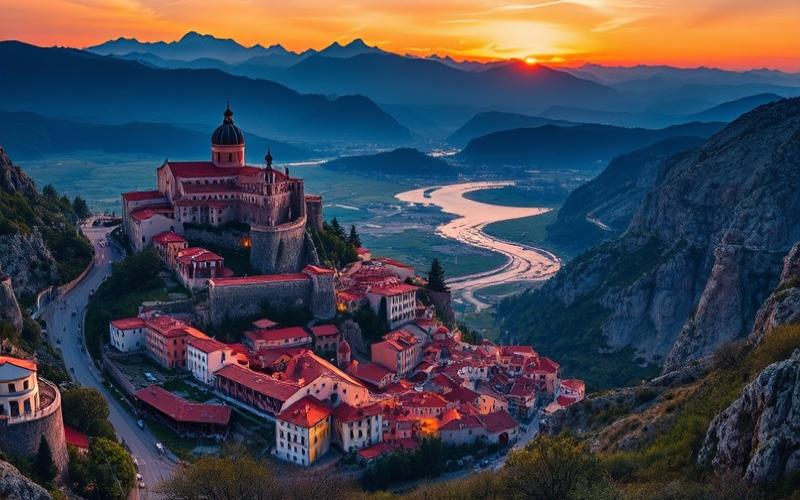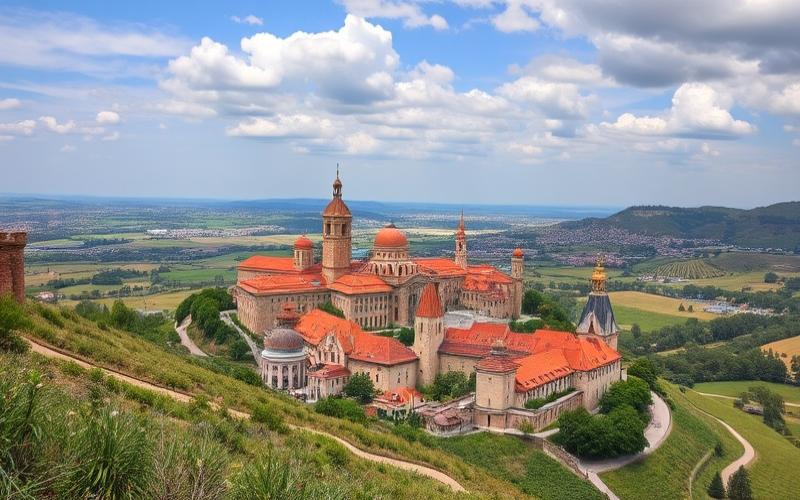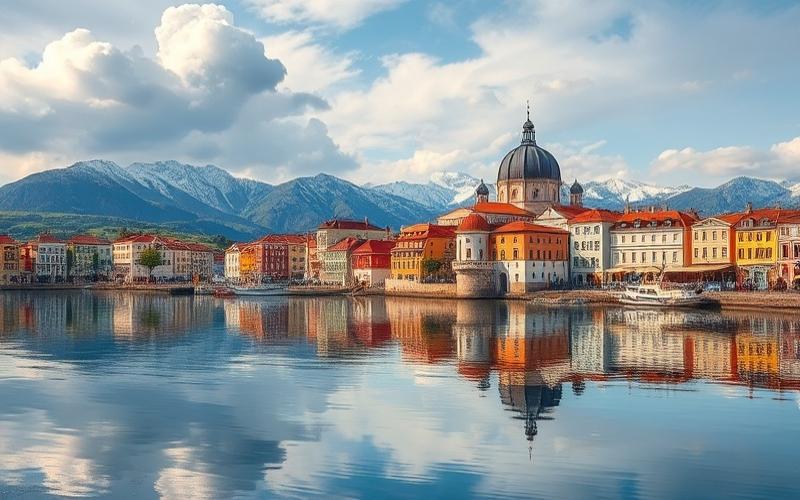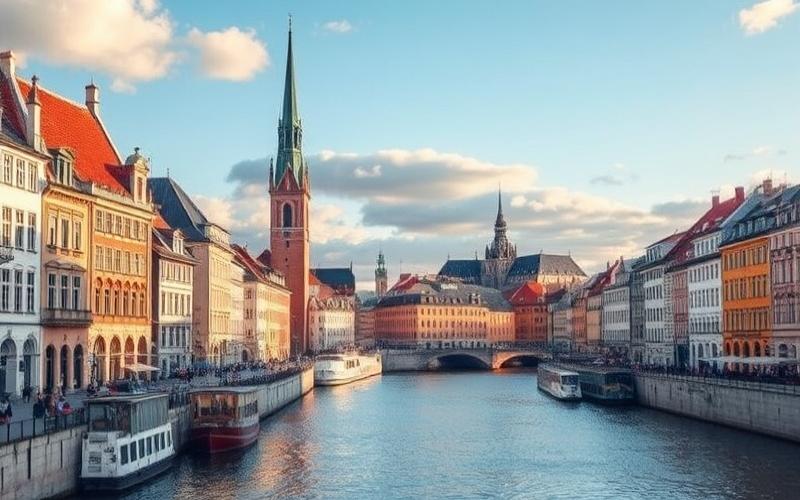
 Published on and written by Cyril Jarnias
Published on and written by Cyril Jarnias
Estonia, this small country nestled along the Baltic Sea, is filled with hidden treasures just waiting to be discovered. Between its preserved medieval towns, breathtaking natural landscapes, and rich cultural heritage, Estonia offers a unique experience to every visitor. Embark on an unforgettable journey through the must-see tourist attractions of this Baltic gem.
The Medieval Magic of Tallinn: A Journey Through Time
Tallinn, the Estonian capital, is undoubtedly the crown jewel. Its Old Town, a UNESCO World Heritage site, is a true open-air museum. The cobblestone alleys, colorful houses, and medieval towers will instantly transport you to the Middle Ages.
Town Hall Square, Raekoja plats, is the beating heart of the Old Town. Surrounded by historic buildings, it offers a unique atmosphere, especially lively in summer with its café terraces. Don’t miss visiting the Town Hall itself, a magnificent example of Gothic architecture.
For an unbeatable view of the city, climb to the top of St. Olaf’s Church tower. It’s one of the tallest medieval buildings in Europe, and the view from its summit is simply breathtaking.
Toompea Castle, which now houses the Estonian Parliament, is another must-see. Its gardens offer a peaceful setting for a stroll, away from the city bustle.
- A unique and preserved medieval atmosphere
- Many historical sites concentrated in a small area
- A city easily explored on foot
- Very touristy, especially during peak season
- Prices can be high in the historic center
Good to know:
Tallinn is a very safe city, making it an ideal destination for solo travelers or families. Don't hesitate to get lost in its alleys; that's often how you make the most beautiful discoveries!
Lahemaa: An Immersion in Estonian Wilderness
Just an hour’s drive from Tallinn, Lahemaa National Park is a true paradise for nature lovers. It’s the oldest and largest national park in Estonia, offering an incredible diversity of landscapes: dense forests, mysterious swamps, winding rivers, and sandy beaches.
The park is crisscrossed by numerous hiking trails that will lead you through pine and birch forests to breathtaking viewpoints. Don’t miss Nõmmeveski Waterfall, the highest in Estonia, or Viru Bog, where you can observe unique flora and fauna.
But Lahemaa is not just a natural park. It also houses several historic manors, like those at Palmse and Sagadi, which testify to the region’s turbulent history. These manors, once owned by Baltic nobles, have been transformed into museums and cultural centers. They offer a fascinating glimpse into aristocratic life in Estonia during the 18th and 19th centuries.
- Preserved and diverse nature
- Many outdoor activities: hiking, wildlife watching, canoeing…
- A unique blend of nature and culture
- Can be difficult to access without a car
- Some areas may be closed in winter
Good to know:
Lahemaa National Park is open year-round, but each season offers a different experience. Autumn is particularly spectacular with its vibrant colors.
Estonian Islands: Preserved Gems in the Heart of the Baltic
Estonia has over 2,000 islands, each with its own charm and unique features. Among them, Saaremaa is the largest and most famous. This island is known for its preserved landscapes, traditional windmills, and picturesque villages.
The island’s capital, Kuressaare, is a charming medieval town dominated by a 14th-century bishop’s castle. The castle now houses a regional museum where you can learn more about Saaremaa’s history and traditions.
The island’s main attraction is undoubtedly the Kaali Crater, a unique meteorite site in Europe. This crater, formed about 4,000 years ago, is surrounded by legends and mysteries. Nature enthusiasts will also appreciate the island’s many hiking trails and sandy beaches.
Another Estonian island worth visiting is Hiiumaa. Less touristy than Saaremaa, it offers a more authentic and preserved experience. Hiiumaa is known for its iconic lighthouses, like Kõpu Lighthouse, one of the oldest operating lighthouses in the world.
- Unique and preserved landscapes
- A peaceful atmosphere, far from the hustle and bustle of big cities
- A rich cultural and historical heritage
- Limited access, often requiring a ferry
- Tourist infrastructure less developed than on the mainland
Good to know:
The Estonian islands are particularly pleasant to visit in summer, but be aware, it's also peak tourist season. Remember to book your accommodation in advance.
Tartu: A Dive into the Heart of Estonian Intellectual Life
Tartu, Estonia’s second city, is often considered the intellectual capital of the country. Home to the oldest university in the Baltic countries, Tartu breathes culture and knowledge. Its city center, with its Neoclassical and Art Nouveau buildings, is a real feast for the eyes.
Town Hall Square is the heart of the city. Dominated by the Neoclassical Town Hall, it’s surrounded by lively cafés and restaurants. Don’t miss the “Kissing Students” fountain, which has become a symbol of the city.
The University of Tartu, founded in 1632, is worth a visit. Its main building, with its white columns, is a perfect example of Neoclassical architecture. The university museum, located in the old cathedral ruins, offers a panoramic view of the city from its tower.
For art lovers, the Tartu Art Museum (TARTMUS) is a must-see. It houses an impressive collection of Estonian and international art.
- A young and dynamic atmosphere thanks to the university
- A rich cultural and architectural heritage
- Generally more affordable prices than in Tallinn
- Fewer “classic” tourist sites than in Tallinn
- Can seem quiet outside the academic period
Good to know:
Tartu has been designated a European Capital of Culture for 2024. It's the perfect opportunity to discover this dynamic city and its many cultural events.
How to Get to Estonia: The Country’s Gateways
Estonia is easily accessible from many European cities. Tallinn International Airport is the country’s main gateway. It’s served by many airlines, including low-cost carriers, allowing you to find flights at attractive prices.
For those who prefer to travel by land, Estonia is well connected to its Baltic neighbors. Regular buses link Tallinn to Riga (Latvia) and Vilnius (Lithuania). It’s also possible to come by ferry from Helsinki (Finland) or Stockholm (Sweden).
Once there, the public transportation network is well developed. Buses and trains make it easy to reach the country’s main cities. For more flexibility, especially to explore national parks or the islands, renting a car can be a good option.
- Many air connections with the rest of Europe
- Efficient public transportation network
- Small country, easy to explore
- Few direct flights from distant destinations
- Some rural areas can be difficult to access without a car
Good to know:
Estonia is part of the Schengen Area. EU citizens therefore only need a valid ID card or passport to enter.
Where to Stay in Estonia: Accommodations for All Tastes and Budgets
Estonia offers a wide variety of accommodations, suitable for all budgets and travel styles. In Tallinn, you’ll find many charming hotels in the Old Town, perfect for soaking up the medieval atmosphere. The Bern Boutique Hotel, located at the entrance to the Old Town, offers excellent value for money. For those seeking more luxury, the Radisson Collection Hotel, with its panoramic view of the port and Old Town, is an excellent choice.
In smaller cities like Tartu or Pärnu, options are more limited but often more affordable. The Taanilinna Hotell in Tartu, for example, offers comfortable accommodation just steps from the city center.
For a more authentic experience, why not opt for a traditional farm in Lahemaa National Park? You can immerse yourself in Estonian nature while discovering the local way of life.
On the islands, options range from small family hotels to vacation homes. It’s the perfect opportunity to rent a traditional wooden house and live like a true islander.
For budget travelers, Estonia also has many hostels, particularly in Tallinn and Tartu. They often offer a friendly atmosphere and are an excellent way to meet other travelers.
- Wide variety of accommodations for all budgets
- Possibility to stay in unique places (manors, traditional farms…)
- Hosts are generally welcoming and often speak English
- Prices can be high in Tallinn, especially during peak season
- Advance booking recommended, especially for unique accommodations
Good to know:
Many Estonians offer guest rooms or apartments on platforms like Airbnb. It's often an excellent option for a more authentic experience and to meet locals.
Estonia, with its medieval towns, preserved national parks, and picturesque islands, offers a unique travel experience in Europe. Whether you’re a history buff, nature lover, or simply looking for an off-the-beaten-path destination, this small Baltic country will win you over. Don’t hesitate any longer, embark on the Estonian adventure!
Disclaimer: The information provided on this website is for informational purposes only and does not constitute financial, legal, or professional advice. We encourage you to consult qualified experts before making any investment, real estate, or expatriation decisions. Although we strive to maintain up-to-date and accurate information, we do not guarantee the completeness, accuracy, or timeliness of the proposed content. As investment and expatriation involve risks, we disclaim any liability for potential losses or damages arising from the use of this site. Your use of this site confirms your acceptance of these terms and your understanding of the associated risks.

